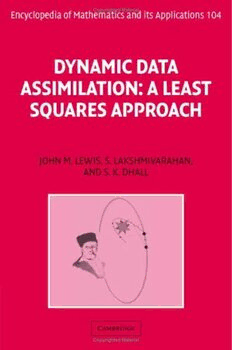
Dynamic Data Assimilation: A Least Squares Approach (Encyclopedia of Mathematics and its Applications) PDF
676 Pages·2006·3.12 MB·English
Most books are stored in the elastic cloud where traffic is expensive. For this reason, we have a limit on daily download.
Preview Dynamic Data Assimilation: A Least Squares Approach (Encyclopedia of Mathematics and its Applications)
Description:
Dynamic data assimilation is the assessment, combination and synthesis of observational data, scientific laws and mathematical models to determine the state of a complex physical system, for instance as a preliminary step in making predictions about the system's behaviour. The topic has assumed increasing importance in fields such as numerical weather prediction where conscientious efforts are being made to extend the term of reliable weather forecasts beyond the few days that are presently feasible. This book is designed to be a basic one-stop reference for graduate students and researchers. It is based on graduate courses taught over a decade to mathematicians, scientists, and engineers, and its modular structure accommodates the various audience requirements. Thus Part I is a broad introduction to the history, development and philosophy of data assimilation, illustrated by examples; Part II considers the classical, static approaches, both linear and nonlinear; and Part III describes computational techniques. Parts IV to VII are concerned with how statistical and dynamic ideas can be incorporated into the classical framework. Key themes covered here include estimation theory, stochastic and dynamic models, and sequential filtering. The final part addresses the predictability of dynamical systems. Chapters end with a section that provides pointers to the literature, and a set of exercises with instructive hints.
See more
The list of books you might like
Most books are stored in the elastic cloud where traffic is expensive. For this reason, we have a limit on daily download.
